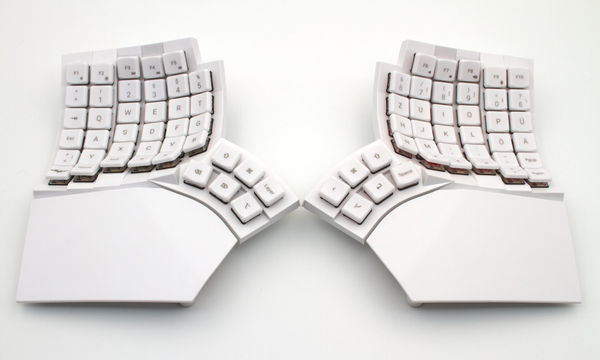What to Look for in an Ergonomic Keyboard
Keys, shells, and layouts – find the right keyboard for your needs

Photo by Peppy Toad on Unsplash
Today there are increasing options for keyboards better suited to long days spent at a desk, including options for customization.
Most keyboards are living fossils. While other hardware products have added features and increased efficiency, the average modern keyboard differs little from its typewriter-inspired ancestors of five decades ago. Nor do modern manufacturers seem much interested in anything more than token improvements. Yet in the past two decades, a small but growing group of open hardware manufacturers has emerged to fill the gap, developing open source firmware such as QMK and Kaleidoscope, and developing ergonomic hardware that can be customized to meet almost any need (you can find a list of ergonomic keyboard manufacturers at the end of this article). With an aging user base spending hours each day at the keyboard, ergonomic keyboards are rapidly coming into their own, but what should potential users look for? The features that make a keyboard ergonomic fall into three categories: The keys, the hardware shell, and the ability to customize layouts. A few features, such as wireless and Bluetooth, are just starting to become widely available (Figure 1), but these three categories are more or less standard. However, no keyboard that I have encountered has all the ergonomic features available, and how a feature is implemented may be important as well.

Just as importantly, buyers need to learn what to avoid. Today the word "ergonomic" is often no more than a marketing term, in the same way that "organic" sometimes may be. Manufacturers such as Microsoft and Logitech offer so-called ergonomic keyboards whose look imitates actual ergonomic keyboards, but which offer severely limited features – if any – such as a few programmable keys and lightly sculptured keycaps, of which the most that can be said is that they are a slight improvement over the chiclet keys on many laptops. The main concerns of such keyboards are features such as cushioned wrist rests, which are the least of ergonomic features and are not needed if you suspend your fingers over the keys like a touch typist does. In fact, some wrist rests can aggravate the repetitive stress injuries that ergonomic boards are supposed to prevent. Yet consumer guides to ergonomic keyboards often focus exclusively on such low-end products, ignoring the fact that they offer little more than a regular $20 keyboard for two or three times the price. For a keyboard that can accurately be called ergonomic, you can usually expect to pay $200 to $500. If that seems expensive, remember that video cards for gaming can be three or four times more expensive – and few of us can write them off as a business expense.
[...]
Buy Linux Magazine
Subscribe to our Linux Newsletters
Find Linux and Open Source Jobs
Subscribe to our ADMIN Newsletters
Support Our Work
Linux Magazine content is made possible with support from readers like you. Please consider contributing when you’ve found an article to be beneficial.

News
-
Zorin OS 18 Hits over a Million Downloads
If you doubt Linux isn't gaining popularity, you only have to look at Zorin OS's download numbers.
-
TUXEDO Computers Scraps Snapdragon X1E-Based Laptop
Due to issues with a Snapdragon CPU, TUXEDO Computers has cancelled its plans to release a laptop based on this elite hardware.
-
Debian Unleashes Debian Libre Live
Debian Libre Live keeps your machine free of proprietary software.
-
Valve Announces Pending Release of Steam Machine
Shout it to the heavens: Steam Machine, powered by Linux, is set to arrive in 2026.
-
Happy Birthday, ADMIN Magazine!
ADMIN is celebrating its 15th anniversary with issue #90.
-
Another Linux Malware Discovered
Russian hackers use Hyper-V to hide malware within Linux virtual machines.
-
TUXEDO Computers Announces a New InfinityBook
TUXEDO Computers is at it again with a new InfinityBook that will meet your professional and gaming needs.
-
SUSE Dives into the Agentic AI Pool
SUSE becomes the first open source company to adopt agentic AI with SUSE Enterprise Linux 16.
-
Linux Now Runs Most Windows Games
The latest data shows that nearly 90 percent of Windows games can be played on Linux.
-
Fedora 43 Has Finally Landed
The Fedora Linux developers have announced their latest release, Fedora 43.

